|
Asthma, Mycobacteria, Cancer
Malluca
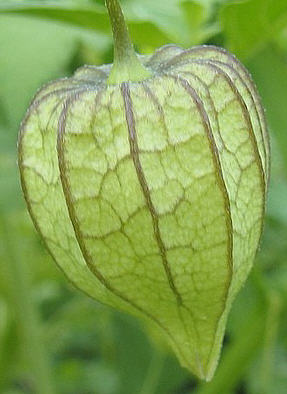
Malluca
(Physalis angulata)
Code: BOS252 -- Price: $18.95
120 Capsules x 500 mg.
Order Now
 Email
Email
 Summarized Description: Summarized Description:
Malluca or "Balloon Cherry," is a close relative of what here in Ecuador
we call "Uvilla" (Goldenberry / "Physalis peruviana"). They look very similar,
especially the calyx and fruit, but they have very different medicinal properties.
Like "uvilla," Malluca is an herbaceous annual, which likes plenty of sun,
but can grow on marginal soil. Unlike Goldenberry, it prefers lower
elevations with higher temperatures, which is why it thrives in the tropics.
Uses & Protocols
 Throughout indigenous parts of South America,
Mullaca is used to treat asthma, bacterial and viral infections, dermatoses, fever,
hepatosis, nausea, nephrosis, and inflammation. Dosage: two capsules, two times a day.
Warnings & Contraindications
 Taylor notes that for those taking
heart medications, blood thinners, or those with other heart problems or low
blood pressure, one should not use Malluca without direction from a qualified
health care practitioner.
Shelf-Life
 Five years or more.
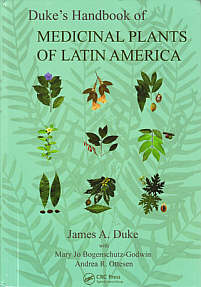
Medicinal Activities
 Further information for practitioners: Further information for practitioners:
World-famous botanist Dr. James Duke attributes the following activities
to this plant (p. 535-537; see hardcopy cover at right),
drawn from the extant literature. (See his graduation for "level of
efficacy" on our amazon traditionals page;
followed by Duke's bibliographic abbreviations (in capital letters),
which we identify
on a separate page.)
 Duke provides a " food farmacy potential" score for this
plant of "FNFF=!."
- Acaricide (f; EGG)
- Analgesic (f; EGG; RAR)
- Anthelmintic (f; EGG; RAR)
- Antiedemic (1; JE89:171)
- Antiinflammatory (f1; DAV; JE89:171)
- Antileukemic (1; RAI; X1622143)
- Antilymphocutic (1; X1622143)
- Antiseptic (f1; DAV; EGG; RAI)
- Antispasmodic (1; RAI)
- Antitumor (1; RAI; X1622143)
- Antiviral (1; RAI)
- Bactericide (1; RAI; X10969728)
- Cytotoxic (1; FT72:676)
- Depurative (f; MPB; RAI)
- Diuretic (f; DAV)
- Expectorant (f; RAI)
- Gram(+)-icide (1; RAI)
- Gram(-)-icide (1; RAI)
- Hypoglycemic (1; RAI)
- Hypotensive (1; RAI)
- Immunomodulator (1; AJC20:233)
- Immunostimulant (1; RAI)
- Insecticied (f; EGG)
- Molluscacide (1; X12886428)
- Myocontractant (1; RAI)
- Narcotic (f; DAV; EGG)
- RT-Inhibitor (1; RAI)
- Topoisomerase-II-Inducer (1; X2539141)
- Topoisomerase-II-Inhibitor (1; X1658010)
- Tranquilizer (f; MPB)
- Vermifuge (f; DAV)
Indications
 Further information for practitioners: Further information for practitioners:
Duke provides the following indications for this plant:
- Abortion (f; JFM)
- Abcesses (f; EGG)
- Acariasis (f; EGG)
- Adenocarcinoma (1; FT72:676; RAI)
- Asthma (f; DAV; EGG; RAI)
- Bacteria (1; RAI; X10969728)
- Bleeding (f; RAI)
- Boils (f; RAI)
- Cancer (1; FT72:676; RAI; X1622143)
- Cancer, brain (1; FT72:676; RAI)
- Cancer, cervix (1; FT72:676; RAI)
- Cancer, colon (1; FT72:676; RAI)
- Cancer, liver (1; FT72:676; RAI)
- Cancer, lung (1; FT72:676; RAI)
- Cancer, nose (1; FT72:676; RAI)
- Cancer, pharynx (1; FT72:676; RAI)
- Childbirth (f; RAI)
- Cholecocystosis (f; RAI)
- Colic (f; MPB)
- Congestion (f; RAI)
- Cramps (1; RAI)
- Dermatosis (f; DAV; DLZ; EGG; RAI)
- Diabetes (f1; EGG; RAI)
- Diarrhea (f; RAI)
- Dysmenorrhea (1; RAI)
- Dyspepsia (f; JFM; RAI)
- Earache (f; DAV; EGG)
- Edema (f; RAI)
- Fever (f; JFM; RAI)
- Fungus (f; EGG)
- Gastrosis (f; AHL; RAI)
- Glioma (1; FT72:676; RAI)
- Gonorrhea (f1; JE48:85; JFM; RAI)
- Hemorrhoids (f; EGG; RAR)
- Hepatosis (f; DAV; EGG; RAI)
- Herpes (1; RAI)
- HIV (1; RAI)
- High Blood Pressure (1; RAI)
- Hysteria (f; DLZ)
- Infection (f1; DAV; EGG; RAI; X10969728)
- Infertility (f; RAI)
- Inflammation (f1; DAV; EGG; JE89:171; RAI)
- Itch (f; EGG; RAI)
- Jaundice (f; DAV; RAI)
- Leukemia (1; RAI; X1622143)
- Malaria (f; DAV; EGG; RAI)
- Measles (1; RAI)
- Melanoma (1; FT72:676; RAI)
- Miscarriage (f; RAI)
- Mycobacterium (1; RAI; X10969728)
- Mycoplasma (1; RAI)
- Mycosis (f; EGG)
- Nausea (f; RAI)
- Nephrosis (f; DLZ; RAI)
- Oliguria (f; RAI)
- Ophthalmia (f; RAI)
- Orchosis (f; RAI)
- Pain (f; EGG; RAR)
- Polio (1; RAI)
- Proctosis (f; RAI)
- Pseudomonas (1; RAI)
- Puerperium (f; RAI)
- Rheumatism (f; DAV; EGG)
- Sores (f; EGG)
- Spasms (1; RAI)
- Staphylococcus (1; RAI)
- Streptococcus (1; RAI)
- Swelling (f1; JE89:171; RAI)
- Syncope (f; RAI)
- Toothache (f; AHL)
- Tuberculosis (1; X10969728)
- VD (f1; JE48:85; JFM; RAI)
- Viruses (1; RAI)
- Worms (f; DAV; EGG; RAI)
|
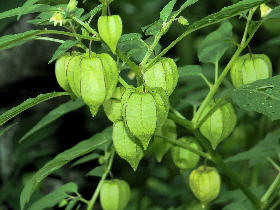
 To U.S. Users: To U.S. Users: This product
have not been evaluated by the U.S. Food & Drug Administration.
It is not intended to diagnose, treat, cure, or prevent any disease.
|
 Recent Studies on Malluca
Recent Studies on Malluca
Sourced from PubMed
 Disclaimer: The following citations provide findings on the
properties of Jatoba and offer insights into prospective areas of future research.
These findings should not be inferred to provide the basis of medicinal claims,
nor should they be relied upon by the public, as such. Readers who want full access to
the PubMed database are encouraged to
register with NCBI. Disclaimer: The following citations provide findings on the
properties of Jatoba and offer insights into prospective areas of future research.
These findings should not be inferred to provide the basis of medicinal claims,
nor should they be relied upon by the public, as such. Readers who want full access to
the PubMed database are encouraged to
register with NCBI.
 As of Jan. 2017, there were 82 citations for
Malluca. Below we list a few of the more notable: As of Jan. 2017, there were 82 citations for
Malluca. Below we list a few of the more notable:
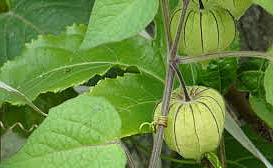
-
Physalis angulata induces in vitro differentiation of murine bone marrow cells into macrophages. (2014)
-
Genotoxicity and antileishmanial activity evaluation of Physalis angulata concentrated ethanolic extract. (2013)
-
Physangulidine A, a withanolide from Physalis angulata, perturbs the cell cycle and induces cell death by apoptosis in prostate cancer cells.
(2013)
-
Physalin F induces cell apoptosis in human renal carcinoma cells by targeting NF-kappaB and generating reactive oxygen species.
(2012)
-
Physangulidines A, B, and C: three new antiproliferative withanolides from Physalis angulata L. (2012)
-
Antimalarial activity of physalins B, D, F, and G. (2011)
-
Inhibitory effects of Physalis angulata on tumor metastasis and angiogenesis. (2011)
-
In vitro and in vivo antimalarial and cytotoxic activity of five plants used in congolese traditional medicine. (2010)
[COMMENT: Malluca was one of two herbs found to be the most antiplasmodial in vitro and in vivo.]
-
Antimicrobial activity of essential oils of Physalis angulata. L. (2010)
-
Activity of physalins purified from Physalis angulata in in vitro and in vivo models of cutaneous leishmaniasis. (2009)
[CONCLUSION: Our results demonstrate the potent antileishmanial activity of physalins, especially physalin F, and suggest
these molecules as the basis for the development of new therapeutic options for cutaneous leishmaniasis.]
-
Patents of drugs extracted from Brazilian medicinal plants. (2009)
[RESULTS/CONCLUSION: Twenty-five patents are presented, most of which concern inflammatory, allergic, parasitic, infectious
or digestive diseases, including extracts from . . . Physalis angulata
and other pharmaceutical compositions with antileishmanial, antimalarial or trypanocidal activity. Brazilian research centres and universities
are responsible for most of these inventions.]
-
Oxidative stress involvement in Physalis angulata-induced apoptosis in human oral cancer cells. (2009)
-
Genotoxic effect of Physalis angulata L. (Solanaceae) extract on human lymphocytes treated in vitro. (2008)
-
Physalis angulata extract exerts anti-inflammatory effects in rats by inhibiting different pathways. (2008)
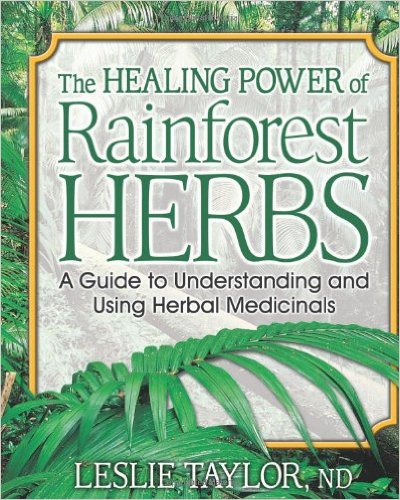
 Extensive information about
Mullaca is covered on the Raintree Forest website.
Even better, you can purchase Leslie Taylor's excellent reference book,
The Healing Power
of Rainforest Herbs: A Guide to Understanding and Using Herbal Medicinals at Amazon. Extensive information about
Mullaca is covered on the Raintree Forest website.
Even better, you can purchase Leslie Taylor's excellent reference book,
The Healing Power
of Rainforest Herbs: A Guide to Understanding and Using Herbal Medicinals at Amazon.
 Malluca is briefly described in
Wikipedia. Malluca is briefly described in
Wikipedia.
|











